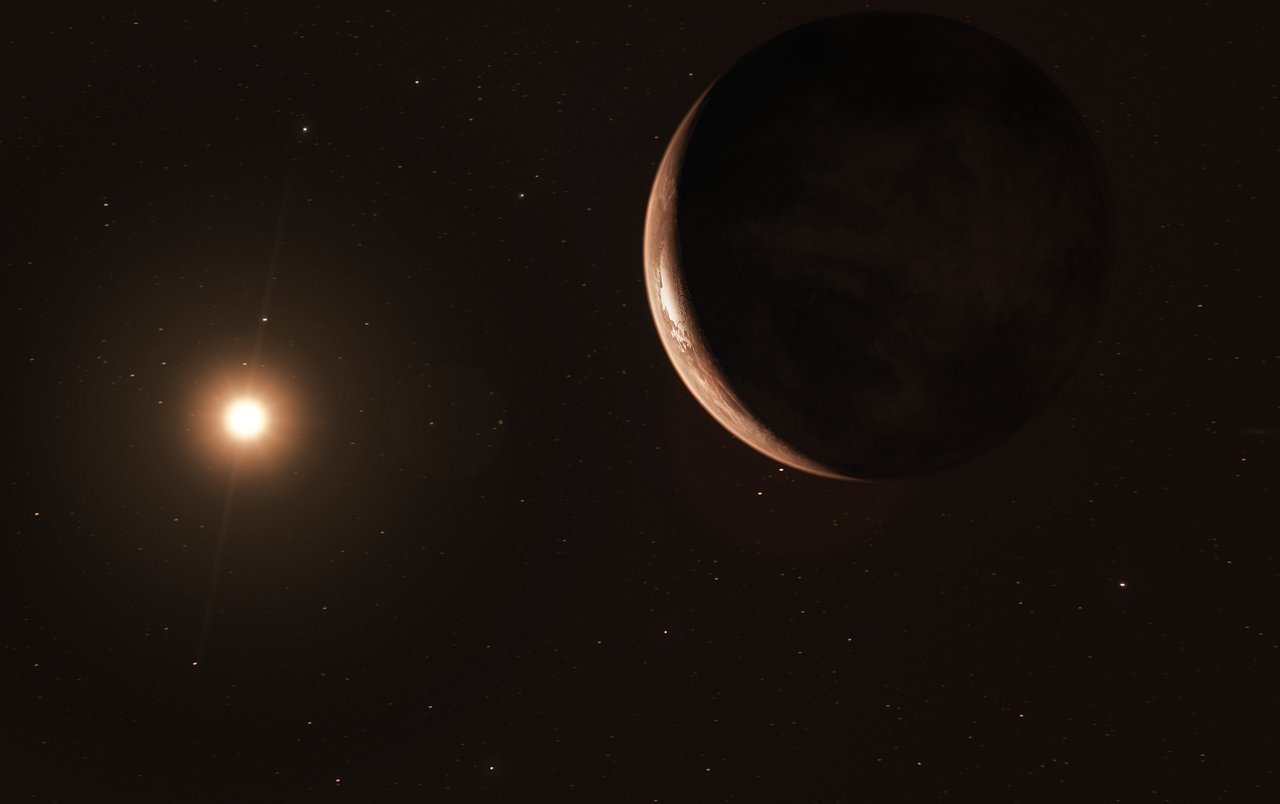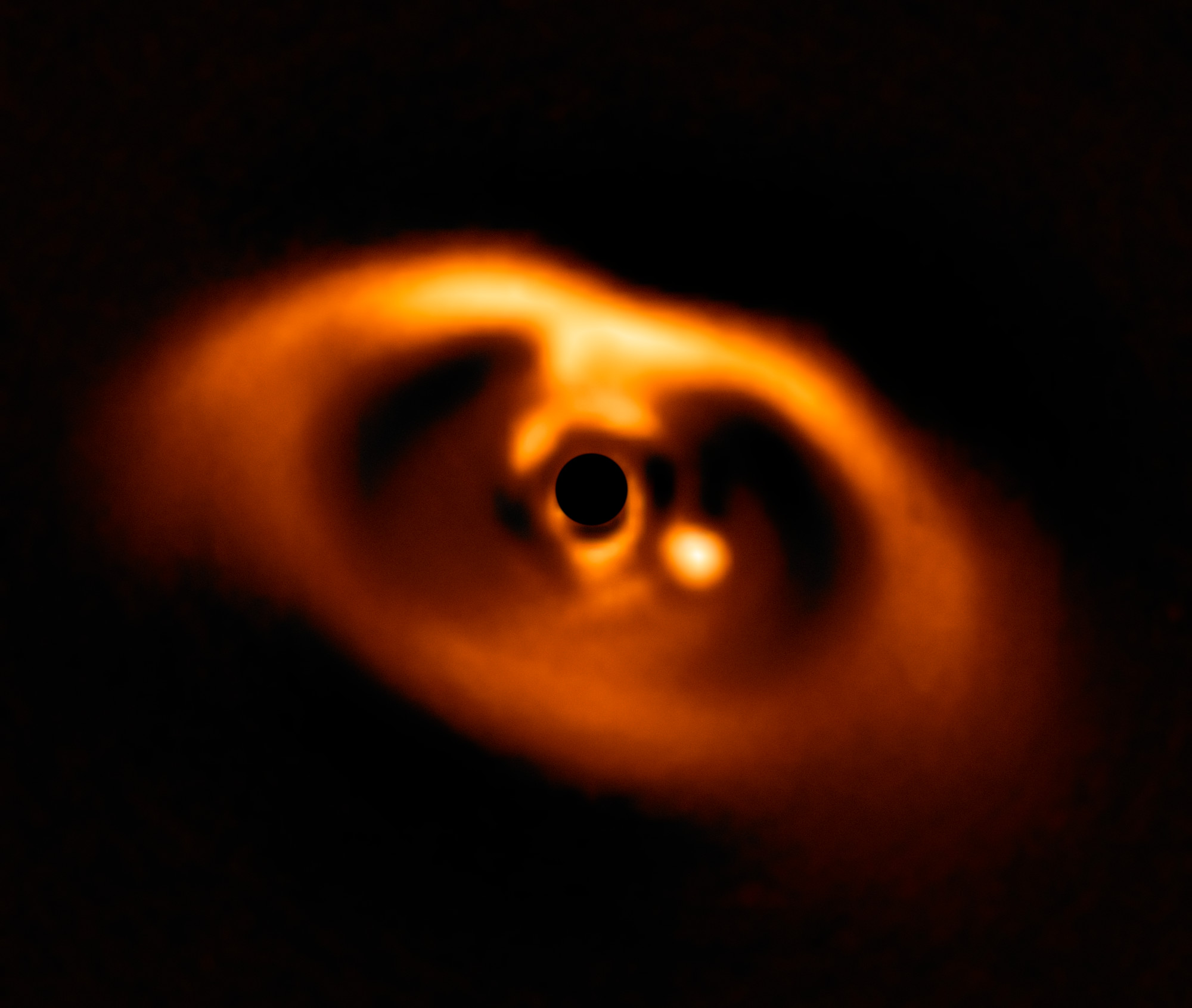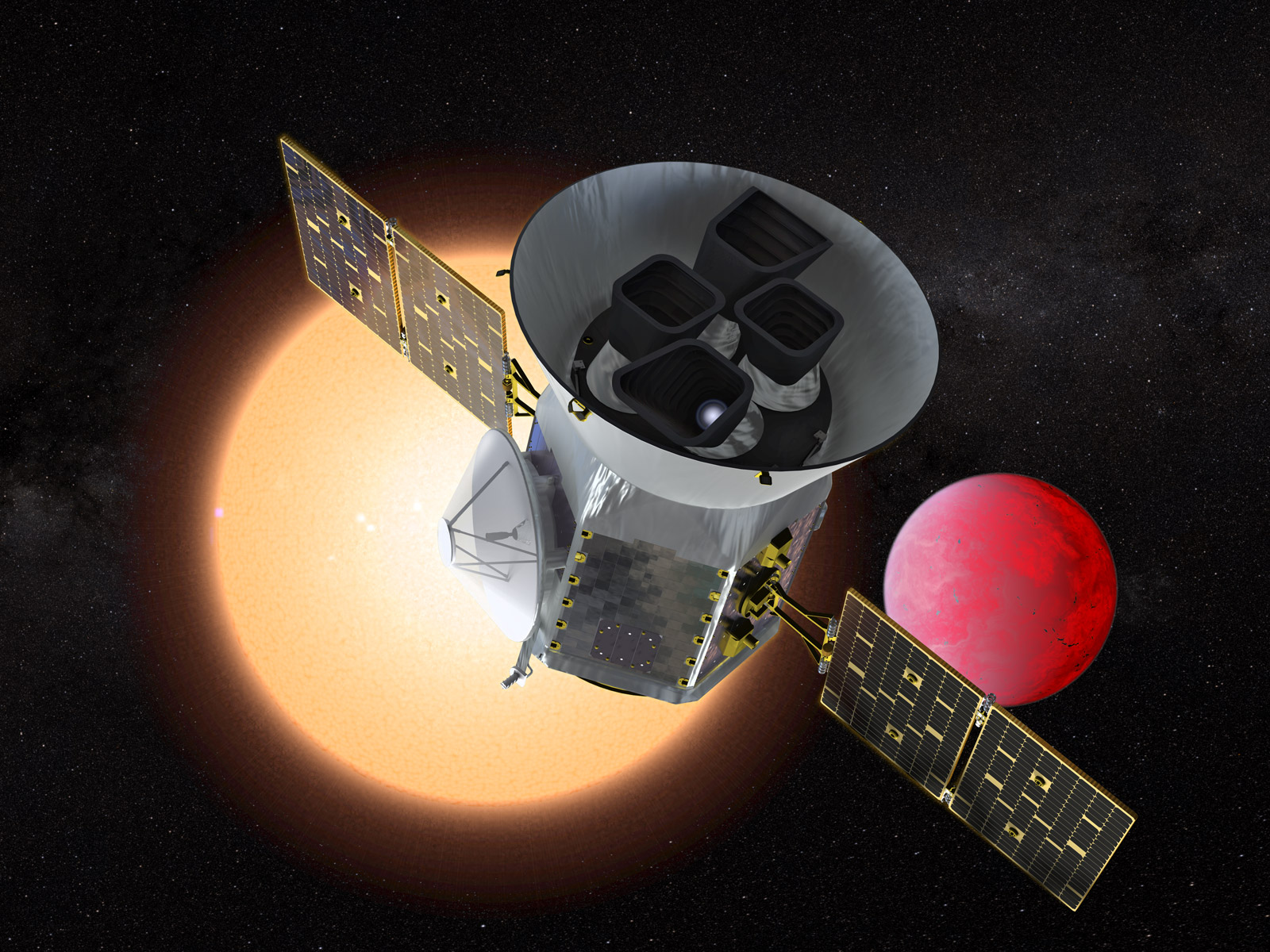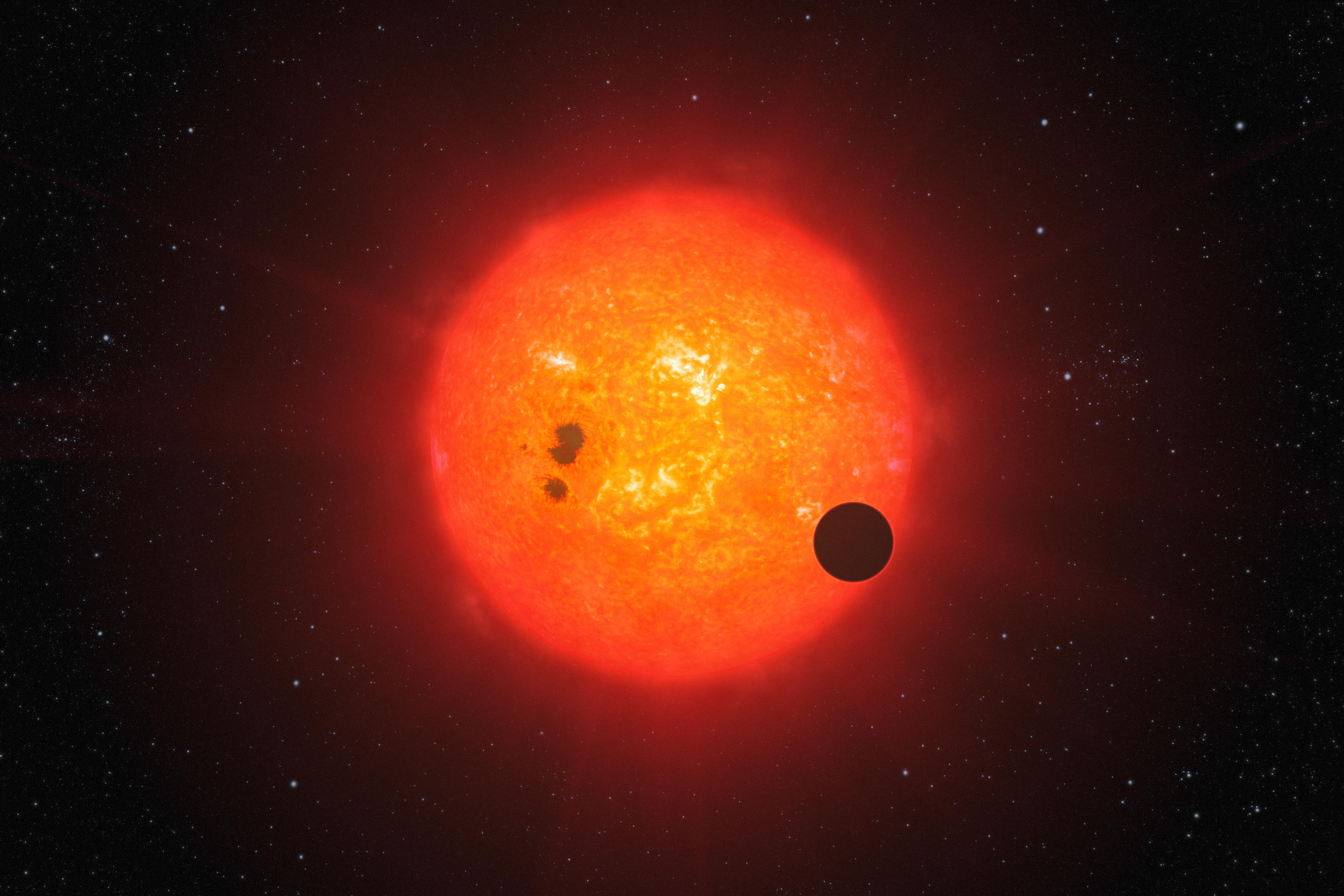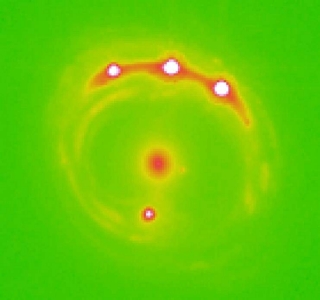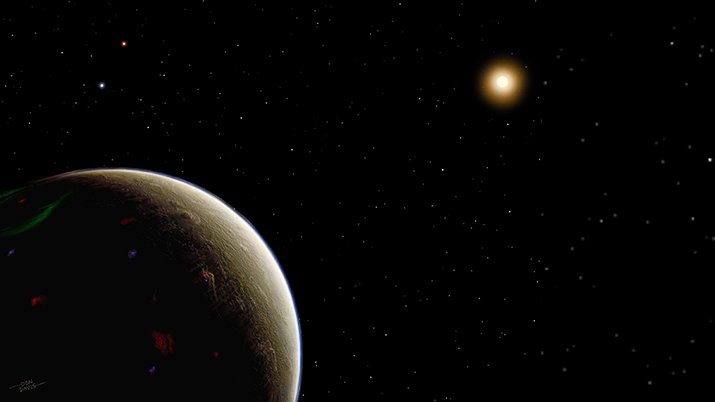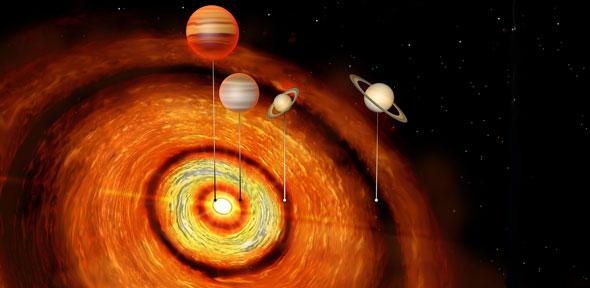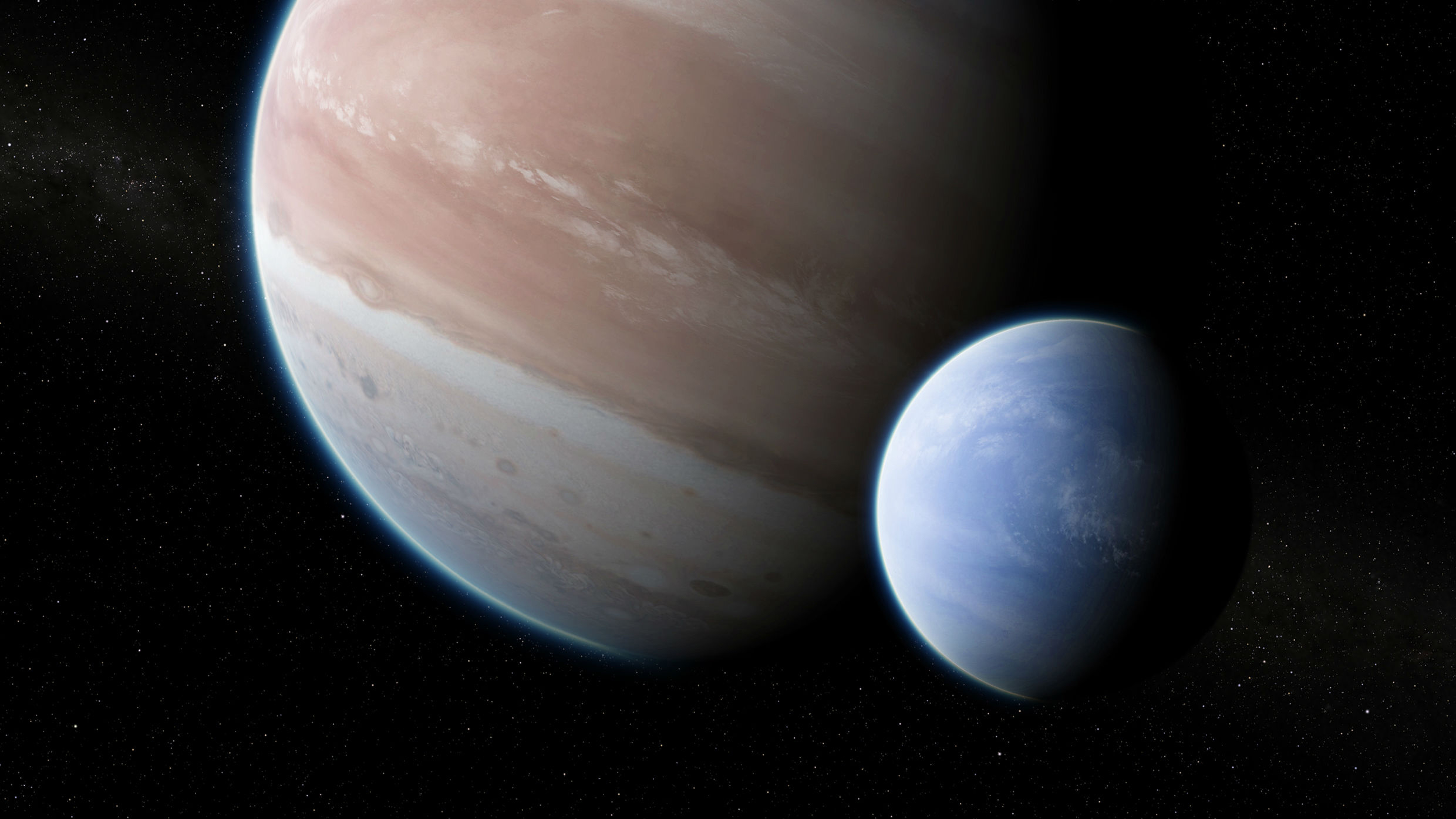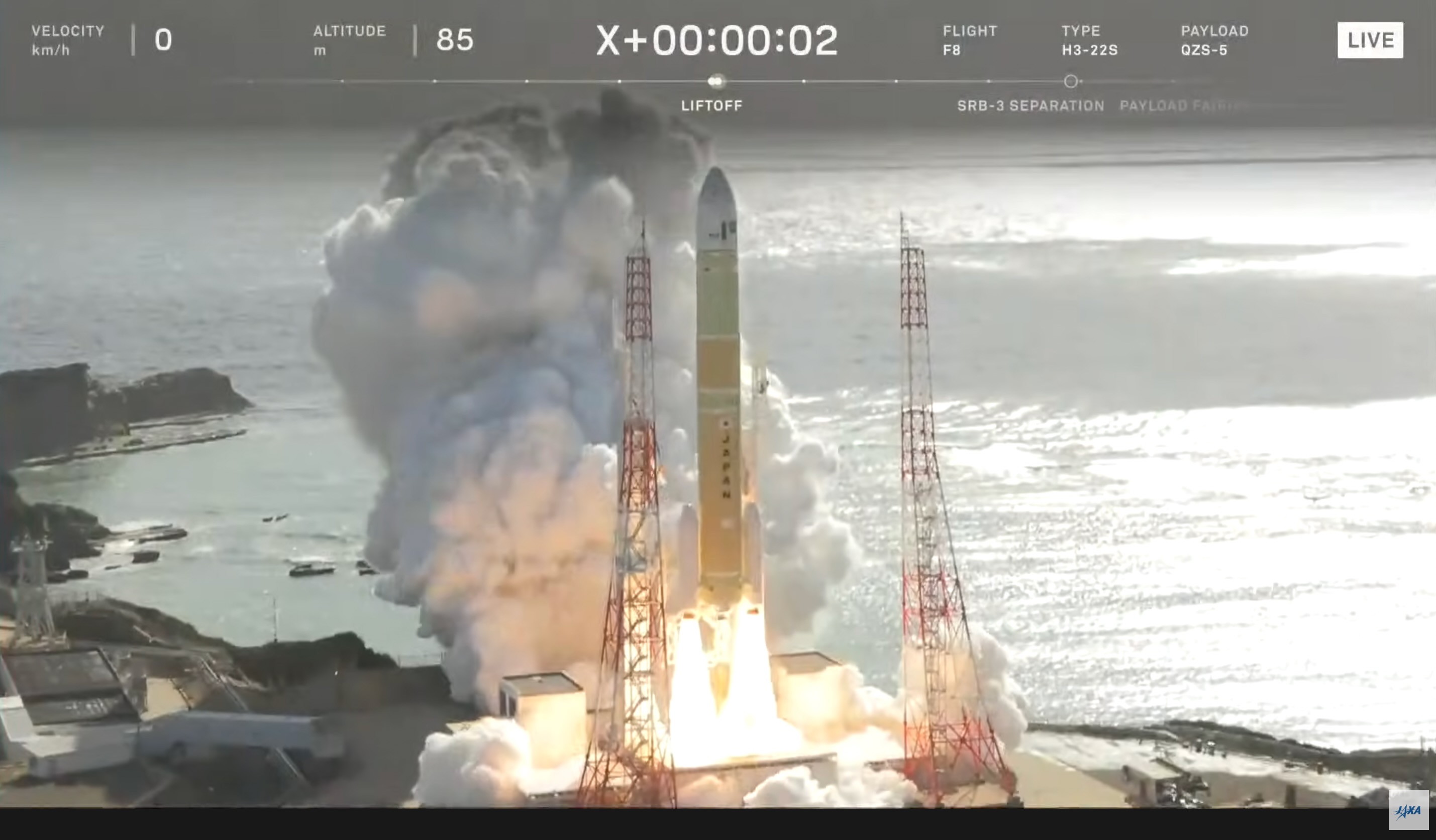The Most Fascinating Exoplanets of 2018

In 2018, exoplanet scientists feasted on data from a nearby ice ball, the first exoplanet baby picture, a majority-metal blob the size of Earth and the home planet of a "Star Trek" fan favorite — not to mention the possible first-ever exomoon spotted. And a major exoplanet hunter sent back its first newfound planets. Read on for the strangest and most intriguing exoplanets found in the past year.
1. Frigid neighbor
Researchers spotted a likely super-Earth-size planet orbiting one of our nearest stellar neighbors — the dim, red Barnard's Star. The icy world, named Barnard's Star b, appears to be 3.2 times Earth's mass and orbits its star every 233 Earth days — because of this long orbit and the dimness of the star, it took a massive amount of data from seven different instruments to notice the tiny stellar wobble that indicates an orbiting planet. The planet's surface temperature is probably about minus 275 degrees Fahrenheit (minus 170 degrees Celsius).
This isn't the closest exoplanet to Earth, but it's nearly there — the only known closer planet is Proxima b, orbiting the star Proxima Centauri just 4.2 light-years from Earth. Besides Proxima Centauri and the binary stars of Alpha Centauri, Barnard's Star is the closest star to Earth — and it's coming closer to us every day. In about 10,000 years, Barnard's Star will have moved closer to the solar system than the Alpha Centauri system. [Icy 'Super-Earth' Exoplanet Spotted Around Nearby Barnard's Star]
2. Baby picture
Using the European Southern Observatory's Very Large Telescope in Chile, researchers snagged a glimpse of a huge alien world forming from the disk of dust and debris surrounding a dwarf star — the first-ever confirmed direct observation of an exoplanet this young.
The baby planet is growing up around a dwarf star called PDS 70, which is 370 light-years from Earth and is just 5.4 million years old. The planet is shaping up to be a big one — it's a gas giant, and it's already two or three times the size of Jupiter, researchers said. It orbits its star about the distance Uranus orbits from the sun. The planet's a toasty 1,800 degrees F (1,000 degrees C), still hot with the energy of its formation. [It's a Beautiful Baby Exoplanet! Historic Photo Is 1st View of Alien World Being Born]
3. Evaporating target
NASA's newest planet-hunting mission, Transiting Exoplanet Survey Satellite (TESS), returned its first exoplanet find: A super-Earth that's probably evaporating from the heat of its star. TESS works by analyzing tiny changes in stars' brightness that indicate a planet is passing by. It's first planet discovery is circling the star Pi Mensae, also known as HD 39391, which is about 59.5 light-years from Earth.
Researchers had already found a gas giant with about 10 times Jupiter's mass, called Pi Mensae b, in the star's system, circling in an eccentric orbit that brings it up to three times as far from its star as Earth is from the sun. Now, it has a sibling: Pi Mensae c, which orbits 0.07 times the distance from Earth to the sun, or 1/50th the distance between Mercury and the sun. This newfound super-Earth is 2.14 times Earth's diameter and 4.82 times Earth's mass, and it likely has a rocky core and extended hydrogen and helium atmosphere, evaporating under its star's harsh radiation. (The researchers noted its density could also allow for a world made of water.) [NASA's New Planet Hunter Just Found Its 1st Alien World — an Evaporating 'Super-Earth']
Breaking space news, the latest updates on rocket launches, skywatching events and more!
4. Epic cannonball
This planet, called K2-229 b, is a metal-heavy, Mercury-like world a hair bigger than Earth. While planets like Earth, Venus and Mars have metallic cores that make up about a third of their masses, Mercury — and K2-229 b — have oversize metal cores taking up two-thirds of their masses. Researchers found the planet orbiting a star slightly cooler and smaller than the sun, 339 light-years from Earth.
K2-229 b orbits its star at 1/100th the distance between Earth and the sun, and its dayside temperature can reach 3,737 degrees F (2,058 degrees C). (Mercury, which orbits much farther out, reaches only 801 degrees F, or 427 degrees C.) K2-229 b was first spotted by the telltale wobble of its star, and then observed passing in front of the star, making it possible for researchers to glean its size. By studying the planet, researchers can learn more about where such worlds can form in star systems, or how rocky planets might evolve into cannonballs. [Newfound Alien Planet is a Metal-Heavy Cannonball]
5. (Very) distant kin
The relativistic bending of light around massive objects revealed the potential signature of trillions of free-floating planets between the size of the moon and Jupiter in a distant galaxy, marking the first evidence of planets outside the Milky Way. If that data holds true, it would suggest there might be 2,000 free-floating planets for every star in a galaxy.
When they spotted that signature, the researchers were relying on a phenomenon called gravitational lensing, where light from a background galaxy with a bright quasar at its core, 3.8 billion light-years from Earth, was bent around a foreground galaxy on its way past. By the way the light was bent — and the slight differences in four copies of the background galaxy seen ringing the foreground galaxy due to that bending — researchers were able to detect signs of the possible planets. [Einstein's Theory Helps ID First Exoplanets Outside Milky Way]
6. Spock's home
The beloved "Star Trek" character Spock canonically hails from the planet Vulcan, which series writers once placed at the real star 40 Eridani A (also called HD 26965), 16 light-years from Earth. This year, researchers found at least one planet around the star, about twice the size of Earth — a real-life Vulcan orbiting the star. The planet takes 42 days to whip around its star, and it's probably too close in to retain liquid water on its surface.
The star HD 26965 can be seen by skywatchers in the night sky, and it's an orange-ish star a bit smaller and cooler than the sun, but with a similar age and sunspot pattern. The star shares its system with two other stars, which would be visible from this newfound planet's surface. [Hey, Spock! Real-Life 'Planet Vulcan' Orbits Sun Featured in 'Star Trek']
7. Big brothers
Researchers have spotted four gas giants circling the young star Cl Tau, which is about 500 light-years from Earth. The star is just 2 million years old, and one planet, called Cl Tau b — 10 times the mass of Jupiter — was already known to circle it once every nine days. But as it turns out, bulk runs in the family: New views from the ALMA telescope array in Chile have spotted evidence for three more planets circling the young star, with one at Jupiter's mass and the other two at Saturn's. Those three additional planets have created gaps in the star-forming disk of dust revealing their presence.
This is the first time astronomers have seen evidence of four gas giants around such a young star, and the planets are unexpectedly widely spread in their orbits — the farthest is 1,000 times farther from its star than the closest. It raises questions of how planets so far away could accumulate material quickly enough to get that big, and whether the innermost planet, Cl Tau b, was pushed inward by jostling relatives. [Record Breaker: 4 Huge Alien Planets Spotted Around Baby Star]
Honorary mention: First exomoon?
It isn't a planet, but we had to include this likely Neptune-size object — what seems to be the first-ever exomoon! The object, orbiting a Jupiter-size planet called Kepler-1625b, first showed itself in a strange signature in how its star dimmed when the planet passed by, as recorded by the Kepler Space Telescope. A follow-up view with the Hubble Space Telescope followed another transit, noticing something tugging gravitationally on the planet and dimming the star a little bit extra.
Could they just be a binary pair of planets? It depends on how you define it, the researchers said. The object has about 1.5 percent the mass of the planet it orbits, which is similar to the ratio of masses between our moon and Earth (1.2 percent). This object, though, orbits 1.9 million miles (3 million kilometers) from its planet, which is about eight times the Earth-moon distance. The moon is probably gaseous, and looms about twice as big as Earth's moon in Kepler-1625b's sky. [First Exomoon Found? Neptune-Sized World Possibly Spotted Orbiting Alien Planet]
Email Sarah Lewin at slewin@space.com or follow her @SarahExplains. Follow us on Twitter @Spacedotcom and on Facebook. Original article on Space.com.

Sarah Lewin started writing for Space.com in June of 2015 as a Staff Writer and became Associate Editor in 2019 . Her work has been featured by Scientific American, IEEE Spectrum, Quanta Magazine, Wired, The Scientist, Science Friday and WGBH's Inside NOVA. Sarah has an MA from NYU's Science, Health and Environmental Reporting Program and an AB in mathematics from Brown University. When not writing, reading or thinking about space, Sarah enjoys musical theatre and mathematical papercraft. She is currently Assistant News Editor at Scientific American. You can follow her on Twitter @SarahExplains.
